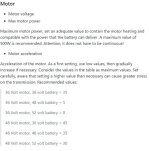The assistance parameters of the hybrid mode are the same used in the two modes, torque and power, combined with the same level.
To decrease the low cadence assistance you have to decrease the torque assist values.
Try power assist with startup boost enabled, the assistance adjustment with the two startup boost parameters is finer.
To decrease the low cadence assistance you have to decrease the torque assist values.
Try power assist with startup boost enabled, the assistance adjustment with the two startup boost parameters is finer.


